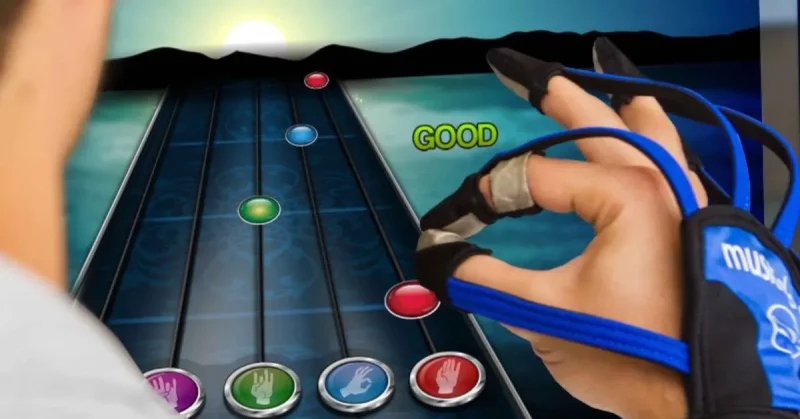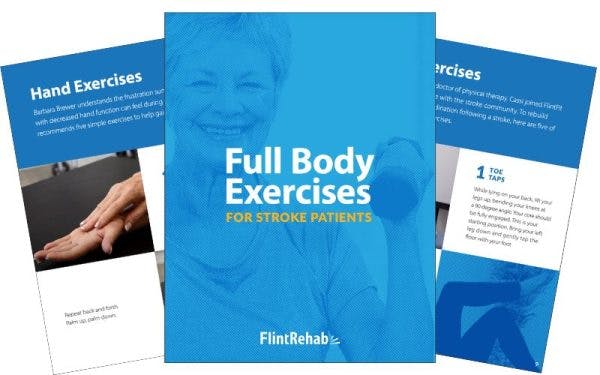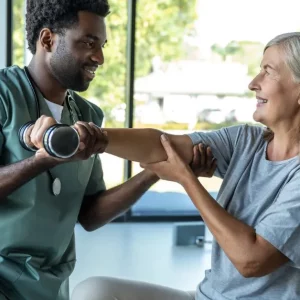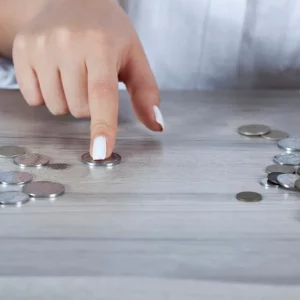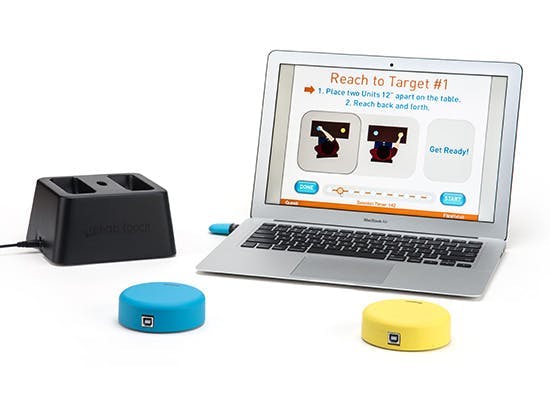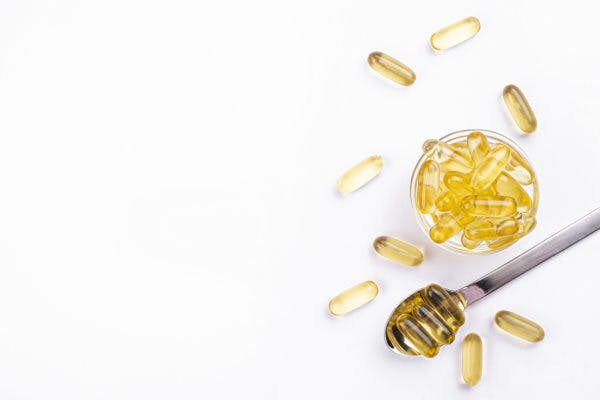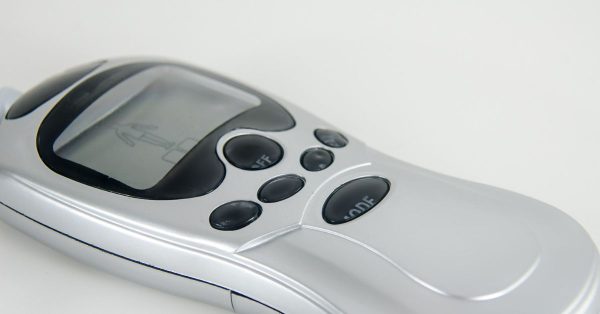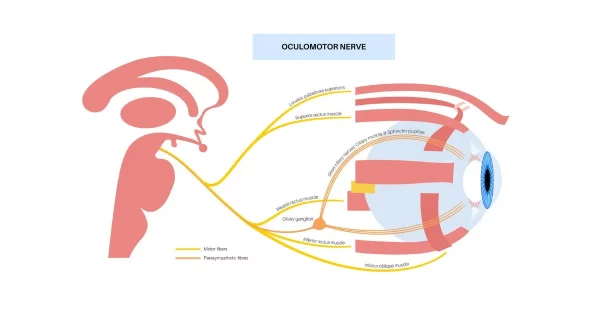Stroke recovery isn’t always easy. Progress can feel slow, motivation can fade, and repetitive therapy exercises can become frustrating. But what if recovery could feel more like playing a game than doing homework? That’s where gamified rehab comes in.
Gamified rehabilitation turns therapy into interactive experiences designed to engage the brain, encourage consistent participation, and make pursuing recovery feel less like a chore. In this article, we’ll break down how gamified rehab works, why it’s effective for stroke recovery, and how to do it right.
Jump to a section:
Why Motivation Matters in Stroke Recovery
How Gamified Rehab Supports Neuroplasticity
Key Benefits of Gamified Rehab for Stroke Recovery
MusicGlove & FitMi – Gamified Rehab for Stroke Recovery
Why Motivation Matters in Stroke Recovery
Stroke rehabilitation often requires hundreds to thousands of repetitions to regain strength, coordination, and motor control. But let’s be honest: performing the same exercises day after day can become tedious and discouraging, especially if progress is slow.
This is where gamification shines. It introduces goals, visual progress tracking, and a sense of achievement, which help stroke survivors stay engaged in their rehab program. By transforming exercise into a more stimulating activity, gamified rehab can help patients stick to their routines long enough to actually see meaningful improvement.
What Is Gamified Rehab?
Gamified rehab is a rehabilitation approach that uses game-like elements to motivate and engage patients during recovery. This can include features commonly found in video games such as point scoring, real-time feedback, levels, challenges, and rewards.
The idea isn’t to “gamify” rehabilitation for entertainment alone. These design principles are applied to therapy tasks to encourage repetition, consistency, and motivation, all of which are essential for neuroplasticity, the brain’s ability to rewire itself after a stroke.
How Gamified Rehab Supports Neuroplasticity
Gamified rehab isn’t just about fun but rather it’s based in neuroscience. Stroke often damages connections between brain regions, but with the right stimulation, the brain can form new connections to compensate for lost function.
This rewiring process called neuroplasticity is reinforced through:
- Repetition: Repeating specific movements helps reinforce new neural pathways.
- Task-specific training: The brain responds best to exercises that mimic real-world tasks.
- Feedback and engagement: Immediate feedback improves learning and retention.
With these 3 goals in mind, gamified rehab checks all three boxes.
5 Key Benefits of Gamified Rehab for Stroke Recovery
Here are some key reasons why more therapists and patients are turning to gamified rehab tools:
1. Increased Adherence to Home Therapy
Sticking to a home therapy program can be challenging, especially when exercises feel repetitive or isolating. Many stroke survivors start strong but lose momentum over time. Gamified rehab helps bridge that gap by transforming therapy into a more interactive and rewarding experience.
When exercises feel like part of a game rather than a chore, it becomes easier to stay engaged. Visual progress, encouraging messages, and music-based or goal-driven tasks all contribute to greater consistency, which is key for long-term recovery.
2. Higher Repetition Rates
This goes a bit hand and hand with adherence but repetition is essential for neuroplasticity or the brain’s process of re-learning after a stroke. Since gamified rehab tools blend therapy exercises as part of a fun challenge, it is easier to get more repetitions into each session.
Whether it’s earning points, leveling up, or unlocking new songs or stages, these systems motivate users to keep going, often without realizing it.
That increased volume leads to stronger, more sustained recovery.
3. Real-Time Feedback
In traditional home therapy, it’s not always clear if you’re doing the exercises correctly. Gamified rehab solves this problem by offering immediate visual and auditory feedback. If a movement is too slow, off-target, or incomplete, the system responds in real time. It helps guide users to adjust and improve.
This kind of instant correction helps reinforce correct movement patterns, speeds up learning, and prevents the reinforcement of compensatory habits. It also creates a sense of connection between effort and outcome, which helps boost motivation.
4. Emotional and Cognitive Engagement
Stroke recovery isn’t just physical. Many survivors also deal with emotional changes, depression, and cognitive challenges like memory loss or trouble concentrating.
Gamified rehab can help stimulate multiple areas of the brain at once. For example, rhythm-based games engage timing and sequencing skills, while visual-motor challenges promote attention and planning.
The emotional impact of music or game-based rewards can also elevate mood which can create a more positive association with therapy.
5. Progress Tracking
One of the biggest frustrations in stroke recovery is the feeling that progress is slow or invisible. Gamified rehab tools usually include built-in progress tracking, displaying metrics like repetitions completed, accuracy scores, session time, or levels achieved.
These small but measurable indicators help patients and caregivers see that improvement is happening, even if it’s gradual. For many users, this visible progress becomes a strong motivator to keep going. It also allows therapists to tailor treatment plans more effectively based on actual performance data.
What to Look for in a Gamified Rehab Program
If you’re exploring gamified rehab options for stroke recovery, it’s important to choose the right tool for you. As you compare options, here are a few things to keep in mind:
- Ease of use: Is the device intuitive and accessible for people with limited mobility or cognitive changes?
- Adjustable difficulty: Can it scale up or down to match your progress?
- Repetition tracking: Does it monitor how many reps you complete?
- Motivating design: Is it engaging enough to use consistently?
- Clinical support: Has it been tested or used in real stroke rehab settings?
MusicGlove and FitMi – Gamified Rehab for Stroke Recovery
The MusicGlove and FitMi are each gamified rehab devices that can be used at home for stroke recovery. While the MusicGlove focuses more on the hand, the FitMi includes exercises that target the legs, arm, hand, and core.
Let’s take a closer look at each!
MusicGlove: Music-Based Hand Therapy
The MusicGlove is an engaging music-based game (similar to guitar hero) that is designed to help individuals regain hand function following a stroke, brain, or other neurological injury.
It combines a sensorized glove with touchscreen software, guiding users through hand and finger exercises synced to the rhythm of different songs.
How It Works
As the music plays, users tap their fingers to match visual prompts on the screen. Each tap triggers a specific movement—like pinching or finger extension—turning traditional therapy into an engaging, interactive rhythm game.
Watch the video below to see an example of a game being played:
What It Helps With
The MusicGlove is designed to improve several key areas of hand function. It helps enhance finger coordination and isolation, allowing users to move each finger more independently and precisely. It also strengthens grip, improves reaction time, and increases range of motion in the fingers and hand.
Additionally, the interactive exercises promote better hand-eye coordination by requiring users to match their movements with visual cues on the screen.
Why It Works
MusicGlove uses task-specific training to promote neuroplasticity. The exercises mimic functional hand movements, while the music provides emotional engagement and real-time feedback to keep users motivated.
The product requires no special training and comes with simple videos to help users get started in under 5 minutes!
Clinical Support
In one study, users who practiced with MusicGlove showed significant improvements in hand function within just two weeks. It’s most effective for individuals with mild to moderate hand impairment who can perform partial hand movements. However, some customers report passively moving their affected fingers/hand until they regain enough movement to do so on their own.
You can learn more about the MusicGlove for stroke or brain injury recovery here.
FitMi: Interactive Rehab for the Whole Body
FitMi is a full-body home therapy system that helps stroke survivors regain strength and mobility in both the upper and lower body. It includes two smart therapy pucks and software that guides users through interactive exercises tailored to their ability level.
The FitMi includes exercises for the legs, core, arms, and hand.
How It Works
The FitMi works by prompting users to complete physical movements such as reaching, lifting or tapping, while the pucks track speed and accuracy. You earn points for each repetition that is completed successfully and the software adjusts difficulty automatically to keep users challenged without overwhelming them.
What It Helps With
FitMi supports recovery across multiple areas of the body by targeting both fine and gross motor skills. It helps build strength in the arms and legs, while also improving overall range of motion. The exercises are designed to enhance coordination and physical endurance, making everyday movements smoother and more controlled.
Additionally, FitMi promotes better trunk control and balance—key components for improving posture, stability, and safe mobility after stroke.
Why It Works
FitMi is built for high-repetition therapy, which is essential for stimulating the brain’s recovery pathways. The game-based design encourages longer and more frequent sessions by making therapy feel rewarding and fun.
In addition, the product is simple and requires no special training to use right out of the box.
Clinical Support
In one study users of the FitMi averaged over 400 movements per session, which was far more than the theoretical dose of a normal home exercise session. In addition, individuals using the FitMi saw improvement in mobility 3x faster than with just traditional therapy alone.
You can learn more about the FitMi for stroke or brain injury recovery here.
Gamified Rehab: Making Stroke Recovery Stick
Gamified rehab isn’t a gimmick. It’s a research-backed approach to making stroke recovery more motivating, accessible, and effective. By blending the science of neuroplasticity with the psychology of game design, tools like MusicGlove and FitMi offer a great option for individuals to stay motivated and on track with their recovery at home!
If you’re on a stroke recovery journey, consider giving gamified rehab a try. It might just be the missing piece that helps you stay consistent, track progress, and feel empowered again.
